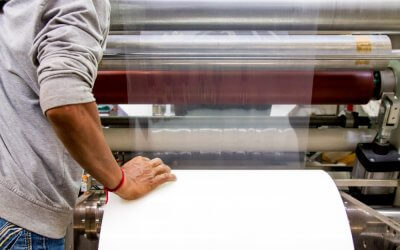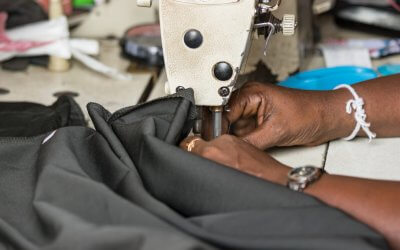As a result of the US-China trade war and the COVID-19 pandemic, many importers have either moved production away from China or are considering a move in the future.
Other countries in Asia and some in Latin America have seen increased interest and export volumes as companies try to find better pricing or develop a more diversified supply chain.
Despite this, China still holds a dominant position in the manufacturing world due to its expertise in many areas as well as its sheer size.
If you’re a newer importer looking at suppliers in China, this article will give you some important tips to help you work with manufacturers in the country.
Table of Contents
#1 Find the Right Supplier for Your Product
How do you find a supplier that can make high-quality products and provides great customer service?
In a previous article, we talked about how to find suppliers for Amazon FBA. We discussed the benefits of going to China in person vs. using a platform like Alibaba vs. working with a sourcing agent.
In 2020, with all the travel restrictions in place, visiting Chinese manufacturers in person is not exactly on the table, and the trade show industry has been hit hard by COVID-19. But online platforms and sourcing agents still offer some good opportunities.
When working with online platforms, some of the suppliers you find will be factories and others will be trading companies. It’s important to understand the difference between factories and trading companies and to choose the right one for your situation.
Alternatively, working with a sourcing agent can be beneficial for importers who are inexperienced or just want to delegate the management of their sourcing work.
Regardless of the type of company you work with, the quality of your products is important.
So, how do you manage quality and earn good reviews from consumers?
#2 Manage Quality Control the Right Way
There are some brands that struggle with quality control and others that seem to have it all together. We’ve talked before about the quality of products made in China and what separates these two groups.
The bottom line is this — if you want to produce high-quality products, you have to understand that quality begins with the buy. In other words, you need to (a) set expectations with your factory from the beginning of your relationship and (b) conduct verification activities to ensure they’re meeting your standards.
To do this, you should create a basic quality control plan, and it should include:
- Your product specifications – These give the factory clear instructions to follow when they’re making your product and help you to reduce the number of products that get scrapped and reworked.
- Third-party inspections – Hire a company to conduct on-site inspections at the factory once your order has been produced. This way you can verify the quality of your products before they are shipped.
- Laboratory testing – Have the factory send some of your products to a lab and ensure that they are safe for consumers and in compliance with regulations.
In 2020, quality control is now more important than ever since some Chinese factories will respond to uncertainty by cutting corners. So putting these measures in place is critical.
You should also be realistic about timelines.
#3 Understand Production and Shipping Timelines
People often underestimate the amount of time it takes to go from having a finished product design to having a product on store shelves.
Recently, we put together this timeline to help you understand all the steps involved.
We always recommend that importers get as realistic as possible, consider how much time things will take, and then build buffer zones into their schedule.
For example, when you schedule your goods to ship by vessel, they need to be at the port by a certain date. If your factory finishes production on the 10th and they are scheduled to be at the port on the 11th, production delays or quality problems might cause you to miss the deadline.
It’s appropriate to give yourself a 3-day buffer and schedule it for the 14th instead. This way, if there are any issues, you have time to deal with them. Adding a buffer to each stage of the process is key.
Also, if you have an original product, there’s something else you need to think about.
#4 Make Sure You Protect Your Intellectual Property
Many new importers choose to buy off-the-shelf products — and for these importers, intellectual property (IP) is not a major concern. But if you’ve developed your own product, you need to be more careful.
According to some experts, without the right legal agreements in place, you can open yourself up to direct competition from your factory. Some factories will take what they learn from making your products and then use that information to help them make and sell their own — but at a lower price.
It’s therefore recommended that you have your factory sign certain agreements, such as an NNN agreement, to help protect your company’s IP.
Keep this in mind if you have your own designs.
Also, with so much going on in the world right now, things are changing rapidly.
#5 Keep an Eye on Political & Regulatory Changes
The US elections are coming up in November, and there may or may not be a change in executive leadership.
Regardless of whether or not Donald Trump and his administration are replaced, it’s hard to predict what will happen with the tariffs we have in place right now. Things could remain as they are or they could escalate, but it’s unlikely they will be reversed.
We already know that businesses have increasingly looked at reshoring and nearshoring options. This trend was in place before the trade war and pandemic, but the process has since accelerated.
As an importer, you have to be flexible and adaptable. No one knows exactly what the future holds, but as things change we can modify our approach and try to stay ahead of the curve.
If you are planning to work with a new factory in China and want to learn more about how to assess their capabilities, we recommend downloading the following guide.
Free Guide
How to Prepare for a Factory Audit
A factory audit helps you assess a supplier's systems, capacity, workplace environment, or capabilities to ensure they meet your requirements as a buyer.
But which type of audit should you conduct, and which points should you cover on your checklist? In this free guide, you'll learn how to run an effective supplier assessment.





0 Comments